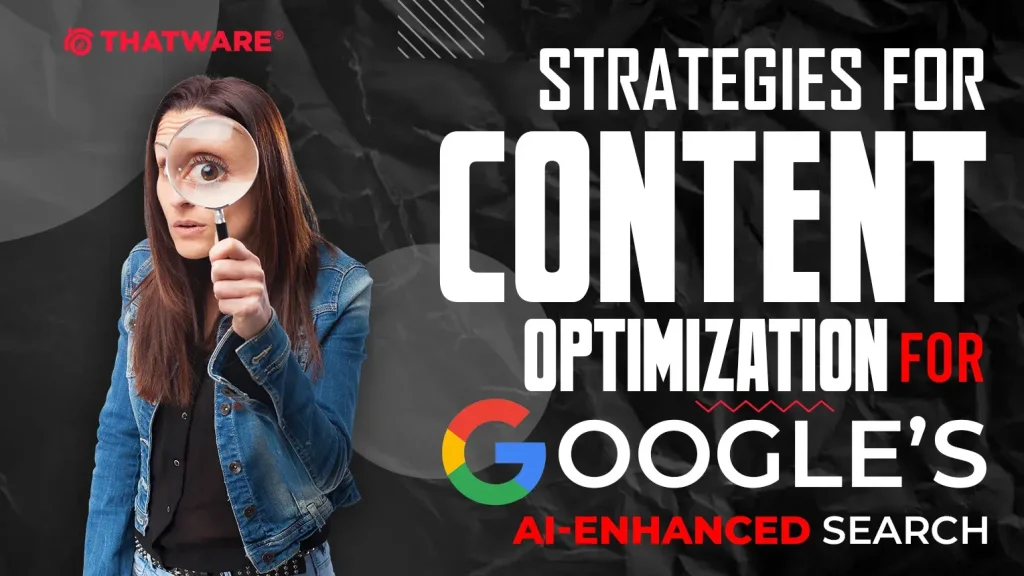SUPERCHARGE YOUR ONLINE VISIBILITY! CONTACT US AND LET’S ACHIEVE EXCELLENCE TOGETHER!
As the world of digital search continues to evolve, Google’s latest innovations—AI Mode and AI Overviews—have introduced a fundamental shift in how information is delivered and consumed online. These new features represent more than just technical upgrades; they mark a significant transformation in the SEO landscape, driven by the growing power of generative artificial intelligence. For anyone involved in digital marketing, content creation, or SEO strategy, this evolution isn’t just exciting—it’s critical to understand.

From Keywords to Conversations
Traditionally, SEO has revolved around keywords, meta tags, backlinks, and page structure. Marketers focused on optimizing pages to match specific search terms, often prioritizing algorithm appeal over user-centric value. While those tactics still hold value, they are no longer enough in isolation. With the introduction of AI-enhanced search, Google is moving beyond keyword matching and embracing a more nuanced understanding of user intent.
Thanks to breakthroughs in natural language processing (NLP) and machine learning, Google’s search engine can now interpret complex queries, anticipate follow-up questions, and deliver concise, informative answers that draw from multiple reputable sources. The result? Users get quick, coherent responses that feel more like a conversation than a list of blue links.
What Are AI Mode and AI Overviews?
AI Mode, currently accessible through Google’s Search Labs, allows users to interact with search in a more conversational manner. Instead of typing fragmented phrases like “best laptop for gaming,” users might ask, “What’s the best gaming laptop under $1,000 for college students?” Google responds not with a list of results, but with an AI-generated overview that summarizes the top recommendations, explains the reasoning behind them, and often links to reputable sources for deeper reading.
AI Overviews are the visible output of this technology—a new generation of answer snippets that go beyond traditional featured snippets. These overviews synthesize data from multiple sources into a single, easy-to-understand summary. They aim to save users time by distilling key points from across the web into one coherent block of information. Whether you’re searching for product reviews, how-to guides, or explanations of complex topics, AI Overviews serve up responses that are more contextual, comprehensive, and conversational than ever before.
Why This Matters for Content Creators
For digital marketers, content writers, and SEO professionals, this shift demands a change in mindset. Content must now be optimized not just for visibility, but for utility—meaning it needs to provide clear, concise answers, follow a logical structure, and anticipate the kinds of questions users might ask next. Traditional SEO best practices still play a role, but they need to be layered with strategies that align with AI’s ability to parse nuance and intent.
In the sections that follow, we’ll explore the specific techniques and tools that can help your content rise to the top in this new AI-driven search environment. From enhancing clarity and adding structured data to maintaining high content quality and improving user experience, the path forward requires a thoughtful, adaptable approach to SEO.
Core Strategies for Content Optimization in the Age of AI Search
With the evolution of Google Search into a more intelligent, AI-driven system, content optimization strategies must also evolve. It’s no longer enough to stuff keywords into generic blog posts. Today’s AI-enhanced search tools—like Google’s Gemini model and AI Overviews—prioritize clarity, context, and genuine value. If your content isn’t optimized for these intelligent systems, it risks being left behind.
Let’s explore the core strategies that will help your content stand out in this new era of search.
1. Prioritize Clarity and Relevance
In AI-enhanced search, clarity is currency. Models like Google’s Gemini don’t just scan your content for keyword frequency—they interpret, synthesize, and summarize information in a way that mimics human comprehension. If your writing is cluttered with jargon, redundancy, or vague language, it’s likely to be filtered out in favor of clearer, more relevant alternatives.
Best Practices:
- Use plain, conversational English to ensure your content is easy to understand across different reading levels.
- Answer user queries directly—get to the point quickly and address the search intent behind each question.
- Include an FAQ section with structured Q&A formatting. AI overviews often pull from well-organized question-and-answer content.
- Avoid filler or fluff. Every sentence should add value, guiding the reader (and the AI) through the content’s purpose.
Pro Tip: Tools like Google’s “People Also Ask”, Autocomplete, and Google Trends can reveal the real-world questions your audience is asking. Use these insights to structure content around actual search demand, not just intuition.
2. Implement Structured Data Markup
Structured data—also known as schema markup—is essential for helping Google and its AI models understand what your content is about. While structured data has been around for a while, its role has become even more important with the rise of AI-driven features like AI Overviews and conversational search responses.
Structured data gives search engines a clearer context and allows them to surface your content in rich results, which are often prioritized in AI-generated summaries.
Key Types of Schema for AI Search:
- Article Schema: Tag blog posts, news pieces, and editorial content with this schema to signal topical relevance and publishing information.
- FAQ Schema: Perfect for content formatted with common questions and answers, helping boost your chances of appearing in AI Overview Q&A results.
- How-To Schema: Essential for instructional content, such as tutorials or step-by-step guides, which Google loves to feature in results.
- Product & Review Schema: For eCommerce sites, this helps AI surface product details, pricing, reviews, and ratings accurately.
Implementation Tip: Use tools like Google’s Rich Results Test or Schema.org Validator to check your markup and ensure it’s been applied correctly. Always keep structured data up to date, especially when editing older content.
3. Maintain High-Quality Standards
If AI is the new gatekeeper of search visibility, then quality is the key to the gate. Google has increasingly emphasized the E-E-A-T principles—Experience, Expertise, Authoritativeness, and Trustworthiness—when evaluating content, and its AI tools are designed to favor content that meets these high standards.
Poorly written, thin, or spammy content will be deprioritized—or worse, excluded entirely—from AI summaries and rich results.
Checklist for High-Quality Content:
- Originality: Your content must offer a unique perspective or value. AI models can detect and ignore duplicated or rehashed content.
- Depth: Go beyond surface-level writing. Add depth with data, examples, industry insights, and analysis that shows real knowledge of the topic.
- Credibility: Link to trustworthy sources. Reference studies, research papers, and industry leaders. If your content includes expert quotes, cite them properly.
- User Intent Alignment: Understand the intent behind search queries—are users looking to learn something, buy something, or solve a problem? Tailor your content format accordingly.
ThatWare Insight: AI and NLP tools can assist with ideation, outlining, and even drafting—but don’t let them take over the creative process. Use natural language generation (NLG) for support, but ensure that a human editor refines the tone, nuance, and emotional resonance. Google’s AI prioritizes authentic content created with user value in mind.
4. Optimize for User Experience (UX)
In the era of AI-enhanced search, great content alone isn’t enough. Google’s AI doesn’t just evaluate what you say—it also pays close attention to how users interact with your website. If your page takes too long to load, looks messy on mobile, or frustrates users with poor navigation, it could fall out of favor with AI-generated summaries and rich results.
Google’s Gemini and similar AI models consider engagement signals like bounce rate, time-on-page, and click-through behavior to assess how helpful your content really is. That’s why investing in User Experience (UX) optimization is critical.
UX Optimization Tips:
- Fast Load Speeds: A sluggish site can kill user engagement and SEO rankings. Compress large image files, use lazy loading to delay off-screen content, and consider implementing a Content Delivery Network (CDN) to speed up global access.
- Mobile Responsiveness: With mobile-first indexing, it’s essential that your content is fully optimized for smartphones and tablets. Ensure that font sizes are legible, buttons are easy to tap, and no elements are cut off on smaller screens.
- Readable Formatting: Walls of text are intimidating to both readers and AI. Break content into bite-sized pieces using bullet points, subheadings, and short paragraphs. This not only improves readability but also makes it easier for AI to parse and extract relevant information.
- Internal Linking: Thoughtful internal linking keeps users engaged and helps Google understand your site’s structure. Use anchor text strategically to guide both users and AI bots to related topics across your site.
Technical Tools to Use:
- Google PageSpeed Insights: Analyze your site’s speed and receive actionable recommendations.
- Core Web Vitals (in Search Console): Monitor real-world performance metrics like Largest Contentful Paint and Cumulative Layout Shift.
- Mobile-Friendly Test: See how your site performs on mobile devices and fix layout issues before they impact your rankings.
Remember: A positive user experience directly influences how Google and its AI rank and display your content. Treat UX as a top-tier ranking factor, not an afterthought.
5. Align Content with Conversational Search
One of the biggest shifts in AI-powered search is the rise of conversational queries. With the growing use of voice assistants and natural language processing, users are no longer typing disjointed phrases like “best DSLR 2025”—they’re asking full questions like, “What’s the best DSLR camera for beginner photographers in 2025?”
Your content should mirror this behavior to increase its chances of appearing in AI Overviews and conversational search results.
Optimization Techniques:
- Conversational Tone: Write like you’re speaking to a real person. Use friendly, approachable language that makes complex topics easy to grasp.
- Semantic Keywords & Long-Tail Phrases: Go beyond head keywords. Integrate natural language variations and intent-based phrases like “how to,” “best way to,” “why do,” or “what is.”
- FAQ-Style Content: AI models love question-and-answer formats. Include clearly marked FAQ sections that directly address common questions.
- Engaging Headings: Use headings that mimic conversational cues. For example:
- ✅ “What Are the Best Running Shoes for Flat Feet?”
- ❌ “Running Shoes”
These tweaks make your content more relatable to users—and more discoverable to AI.
6. Optimize for Topical Authority and Content Depth
Topical authority refers to how well your website covers a specific subject area. Google’s AI systems prefer pulling answers from sites that demonstrate comprehensive expertise, not just a one-off article. To succeed, you must own your niche by offering deep, interconnected content that spans every aspect of your chosen topic.
How to Build Topical Authority:
- Content Clusters: Start with a pillar page (like “Complete Guide to SEO”) and link it to multiple in-depth subtopics (like “Technical SEO,” “On-Page SEO,” “Link Building,” etc.). This structure signals to Google that your site is a trusted resource.
- Update Content Regularly: AI models favor freshness. Revisit and update older blog posts with new stats, examples, and internal links. Fresh content not only improves rankings—it keeps users coming back.
- Internal Linking: Smart internal linking builds thematic relevance and helps users dive deeper into related content, improving session time and crawlability.
- Cover All Subtopics: Don’t stop at the basics. If you’re covering SEO, also write about niche angles like “SEO for E-commerce,” “Voice Search Optimization,” “Mobile SEO,” and “SEO Mistakes to Avoid.”
ThatWare Tip:
Use AI-powered SEO audit tools like Surfer SEO, MarketMuse, or ThatWare’s proprietary solutions to scan for content gaps. These tools help you plan an editorial calendar that reinforces your site’s topical authority while aligning with current search trends.
Staying Informed and Adaptive in a Rapidly Changing SEO World
The world of SEO is no stranger to change, but Google’s recent push into AI-enhanced search has significantly raised the stakes. With features like AI Overviews and AI Mode transforming how users engage with search results, the message is clear: staying ahead isn’t about luck—it’s about staying informed and adaptive.
Gone are the days when a single SEO playbook could last for years. Today, algorithms update frequently, and the integration of generative AI into Google Search means ranking factors are evolving at lightning speed. If your SEO strategy is stuck in the past, you’re likely to fall behind fast.
Key Resources Every SEO Professional Should Follow
Keeping up with these changes doesn’t have to be overwhelming—you just need the right sources in your toolkit. Here are a few essential platforms that we at ThatWare rely on for up-to-date insights:
- Google Search Central Blog – This is your direct line to Google’s official updates. Whether it’s new algorithm rollouts or best practices for structured data, this is where the conversation starts.
- Search Engine Journal & Search Engine Land – These leading SEO publications offer expert analysis, case studies, and trend forecasting. They help translate technical changes into actionable strategies.
- Developers.Google.com – A must-follow for any technical SEO work. This site offers detailed guidance on implementing structured data, schema markup, and other backend essentials that help your content stand out to Google’s AI.
What You Should Be Monitoring Regularly
Staying informed means keeping an eye on the right signals. Here are a few elements to track on a regular basis:
- Algorithm Updates: These aren’t always massive, but even subtle tweaks can impact how content is ranked and displayed.
- E-E-A-T Guidelines: Google continues to emphasize Experience, Expertise, Authoritativeness, and Trustworthiness. Updates here can reshape what qualifies as “quality content.”
- New AI Features in Search Labs: Google often tests features in Search Labs before rolling them out universally. Early insight here can help you stay ahead of the curve.
- Policies on AI-Generated Content: As AI tools grow in popularity, Google is refining its position on AI content. Transparency and quality are becoming non-negotiable.
Bonus: What About AI-Generated Content?
One of the biggest questions today is: Can AI-generated content rank well in Google’s AI search?
Google’s answer isn’t black and white. Rather than focusing on how content is created, Google is far more interested in what the content delivers. Is it helpful? Accurate? Original? That’s what matters most.
Best Practices for Using AI Tools:
- Always Human-Edit: AI can assist with structure and ideas, but it lacks the nuance and accuracy of a skilled writer. Always revise for tone, clarity, and originality.
- Add Unique Value: Enrich your content with first-hand experience, industry insights, original data, or anecdotes that AI simply can’t generate.
- Disclose When Appropriate: Being honest about AI usage builds trust, especially in industries where credibility is everything.
At ThatWare, we believe AI should empower writers, not replace them. We use AI tools to streamline workflows, not to shortcut quality.
Wrapping Up: Future-Proofing Your SEO Strategy
Google’s AI-enhanced search isn’t a trend—it’s the direction search is heading. The brands that succeed will be those that embrace change, adapt fast, and build SEO strategies that are both agile and forward-thinking.
Key Takeaways:
- Create user-first content that clearly answers real, intent-driven queries.
- Structure your content with schema markup to boost visibility in AI results.
- Maintain high standards for quality, credibility, and content depth.
- Optimize your website for speed, responsiveness, and user satisfaction.
- Write in a natural, conversational tone that mirrors how people search today.
- Keep learning, testing, and refining as Google’s AI tools evolve.
At ThatWare, we’re proud to help businesses future-proof their digital presence. Whether you’re rethinking your content strategy, looking for an AI-optimized SEO audit, or building a semantic-first website, our team is here to guide you.
Ready to Thrive in the AI Search Era?
Let’s shape the future of your online visibility—together. Contact ThatWare today for a personalized consultation and take the first step toward dominating the new frontier of Google Search.

Thatware | Founder & CEO
Tuhin is recognized across the globe for his vision to revolutionize digital transformation industry with the help of cutting-edge technology. He won bronze for India at the Stevie Awards USA as well as winning the India Business Awards, India Technology Award, Top 100 influential tech leaders from Analytics Insights, Clutch Global Front runner in digital marketing, founder of the fastest growing company in Asia by The CEO Magazine and is a TEDx speaker and BrightonSEO speaker.

